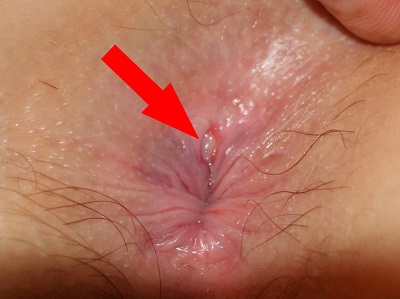The digestive system begins with the mouth and ends in the anus which means that keeping it free of problems from end to end is a priority. This is why having pain in your anal area before and after relieving yourself is never a good way to start the day. In most cases, all signs point to the fact that you have developed an anal fissure. What do anal fissures look like? What color is it? Understanding the condition is just the first part in getting rid of it from your body.
Causes
Anal Fissures are primarily caused by strain or trauma inflicted to the anoderm, the tissue that lines the anal canal. When muscle activity in the area around the anal canal is too regular or too strenuous, the constant contractions might result in considerable trauma. Essentially, trauma is primarily caused by bowel movements that, most of the time, involves the passage of very hard stools. Also, diarrhea can be a major cause for tearing in the anoderm especially if the person suffers from it on a regular basis.
Appearance and Symptoms

What do anal fissures look like? What color is it? For starters, a fissure is just a tear or a cut running through the anus and extends upwards to the anal canal. The skin around the fissure may also develop an off-color hue to a wound or, if the tear is near to a blood vessel, develop a crimson or purple shade. Its most common location is at the midline posteriorly of the anal canal.
The very first symptom of an anal fissure is itching which is a tell-tale sign that the anoderm has been punctured. Since the tissue contains far lesser nerves than any part of the body, the first tear (which possesses nearly the same width and depth as a superficial wound) can only register as a minor signal on the nervous system hence the itching.
As the fissure develops, the person might then begin starting feeling pain during bowel movements as stool passes through the tear and causing further strain on the tissue. This would then be followed by the appearance of blood in the stool, indicating the wound has developed further. Lastly, the person might notice a foul-smelling discharge on their bowel movements which is an indicating of an infection. This is common in anal fissures as they are exposed to the microorganisms found on human refuse.
CLICK HERE TO GET RID OF YOUR ANAL FISSURE WITHOUT SURGERY
Response
Upon the discovery of an anal fissure, the patient should head to the nearest medical facility for an outpatient surgery, which involves the draining of material collected in the fissure and the closure of the fissure. The person might also be given prescribed medicine that would prevent the wound from developing further infection or inhibit constant muscle contractions in the anus. Lastly, the person has the option of changing their diet or adopting simple home solutions as a way of lessening the size and texture of their stool which, in turn, would lessen the chances of another anal fissure from forming in the body.


